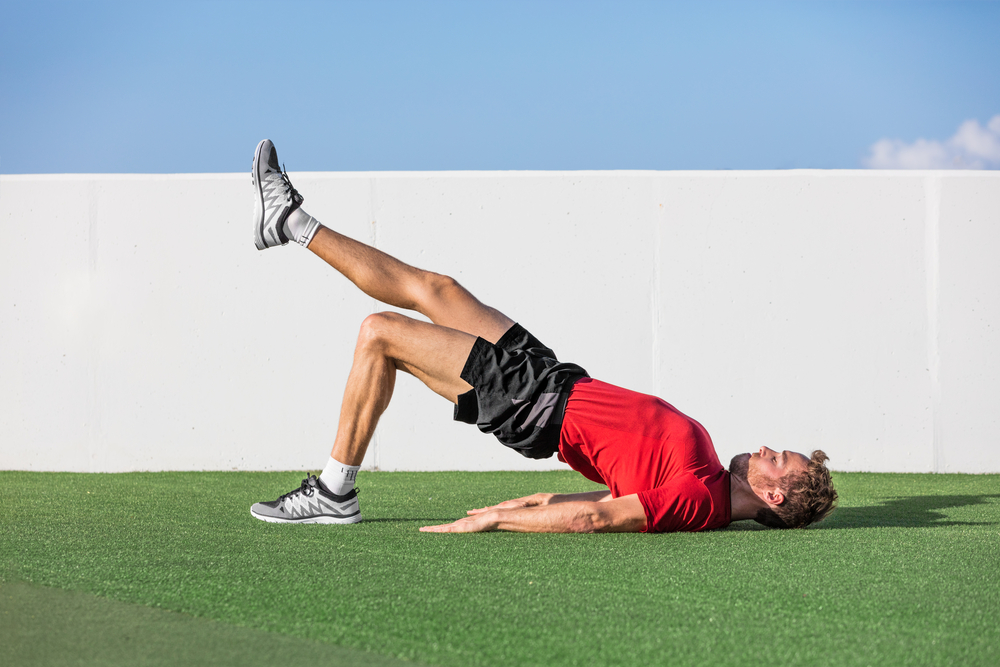It’s no secret that to have a great squat, you have to have great hip mobility. Unfortunately, saying that you need hip mobility to squat deep is like saying you need a lot of money to be rich. If you’re going to get rich, you’d better have a plan. The hips have many different functions. They must be both stable and mobile at different times and in different planes, along with being able to abduct, adduct, extend, and rotate on demand. But when we discuss hip mobility in the context of the squat, what we’re really talking about is hip flexion.
Hip Flexion
Hip flexion is the technical term for a decrease in joint angle between the femur and pelvis. This occurs from either side of the joint, by raising the leg towards the abdomen – like when you run.
Achieving full squat depth with anything less than the full range of motion at the hip requires your body to make a number of biomechanical compromises. Following the joint-by-joint approach, when the hip lacks flexion, the joints above it (the lumbar spine), and below it (the knee) will overcompensate to make up the difference.
Typically when we see lifters struggling to reach full depth during a squat we immediately think of the posterior chain – tight hamstrings, glutes, lower back, etc. Yet limitations in hip flexion can come from the front or the back, depending on what’s being restricted. Hip restrictions come in three main flavours – muscular, capsular, and structural – each requiring different solutions.

Structural Problem
Structural restriction occurs when the femoral head and neck don’t fit properly into the acetabulum (the cup-shaped cavity at the base of the pelvis). Because this is often a genetic trait, sometimes you can’t do anything about it other than curse your parents for passing you their lacklustre DNA. However, these can also form as the result of increased exposure to activities that promote anterior pelvic tilt, The forward tilting of the pelvis is usually the result of a shortening and tightening of the hip flexors and lumbar erectors, coupled with a lengthening and weakening of the glutes and abdominals.
Hip Accessories
Perhaps the least talked about or understood the cause of limited mobility is tightness in the joint capsule itself. Like all synovial joints, the hip is encased in a flexible membrane. This membrane is referred to as your joint capsule. Although it might not receive much attention, it’s one of the most important pieces in the mobility puzzle. When the capsule becomes stiff and tight, it compresses the articulating surfaces of the joint and alters what’s called accessory joint movement.
Accessory movements at the capsular level are necessary for larger physiological movements like flexion or abduction to occur normally.
Bottom-up Hamstring Stretch with Band
Loop a stretch band around a squat cage. Place your leg through the middle of the band, pulling it to where your hip and leg meet. Walk away from the cage, causing the band to stretch.
Once you have a good amount of tension, place the band-leg forward and the free leg back. Bring your hands to the ground, begin to straighten the knees as much as possible, pushing the hips back toward the cage.
Squat with Band
Here the band is the same position around the upper leg, but the anchor is lower to the ground (about 6-8 inches from the floor) so the tension is directed back and down. Walk away from the cage to increase band tension at the hip and perform 10-15 deep squats for each leg.
Soft-Tissue Restriction
Last but not least is muscular restrictions. These are the big men on campus in the strength and conditioning world, receiving much of the attention of both trainers and clients.
These fall into three categories. First are soft-tissue entrapment issues, where tissue becomes gnarled or stuck together, like in the case of trigger points and myofascial adhesions. Second, are problems with excessive stiffness or resistance to changes in length. Finally, problems involving muscle length, where a muscle has actually lost sarcomeres and therefore has become shorter.
Limitations at the bottom range of your squat can be coming from the backside of the pelvis through stiffness or adhesion, or the front side through capsular restriction and decreased accessory motion. Identifying the source of the restriction will have an obvious effect on correcting the limitations in range.
Restrictions on the hamstrings, glutes, or lower back can all limit hip flexion. I find that a lacrosse ball works best to free-up entrapment issues, while a stretch band works best on length and stiffness problems.






